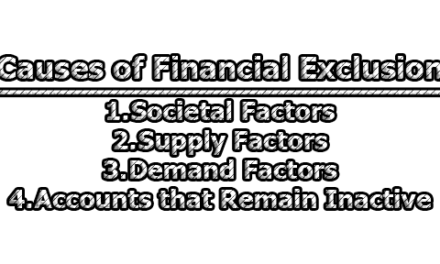Receivable Management in Financial Management: Optimizing Cash Flow and Enhancing Profitability
Receivable management plays a pivotal role in the realm of financial management for businesses. It involves the effective and efficient management of a company’s accounts receivable, which represents the amount of money owed by customers for products or services provided on credit. The strategic handling of receivables is crucial for maintaining a healthy cash flow, reducing the risk of bad debts, and ultimately optimizing profitability. In this exploration, we will delve into receivable management in financial management, its significance, key components, and best practices.
Significance of Receivable Management:
Receivables constitute a substantial portion of a company’s current assets, and their efficient management is imperative for maintaining liquidity. Delayed payments or bad debts can disrupt cash flow, hindering the day-to-day operations of a business. By implementing effective receivable management strategies, organizations can strike a balance between offering credit to customers and ensuring timely collection, thereby mitigating financial risks.
Components of Receivable Management:
1. Credit Policy Development: Establishing a well-defined credit policy is the foundation of receivable management. This involves determining the criteria for extending credit, setting credit limits, and specifying the terms of payment. A carefully crafted credit policy helps in minimizing the risk of default and ensures that customers understand their payment obligations.
2. Credit Analysis: Before extending credit to customers, a thorough credit analysis should be conducted. This involves assessing the creditworthiness of customers based on their financial history, payment behavior, and overall financial stability. By categorizing customers into different risk segments, businesses can tailor their credit terms accordingly.
3. Invoicing and Documentation: Clear and accurate invoicing is essential for facilitating prompt payments. Invoices should include detailed information about the products or services provided, payment terms, and contact details for addressing any queries. Additionally, maintaining proper documentation of transactions is crucial for resolving disputes and ensuring compliance with legal requirements.
4. Terms of Payment: The terms of payment specify the period within which customers are expected to settle their invoices. Striking the right balance between offering attractive payment terms to customers and ensuring timely payments is crucial. Common terms include net 30, net 60, or even shorter terms for specific industries.
5. Collection Policies: Establishing effective collection policies is vital for ensuring that receivables are collected on time. This involves defining the procedures for following up on overdue payments, sending reminders, and escalating collection efforts when necessary. Clear communication and a proactive approach to collections are key components of successful receivable management.
Best Practices in Receivable Management:
1. Utilization of Technology: Leveraging technology can streamline receivable management processes. Automated invoicing systems, customer relationship management (CRM) software, and data analytics tools can enhance efficiency and provide valuable insights into customer behavior and payment patterns.
2. Regular Monitoring and Reporting: Regular monitoring of receivables is essential for identifying potential issues early on. By generating reports that highlight key metrics such as average collection period, aging of receivables, and cash conversion cycle, businesses can gain a comprehensive understanding of their receivable performance.
3. Customer Relationship Management (CRM): Building strong relationships with customers is not only beneficial for sales but also for receivable management. A positive and transparent relationship can facilitate open communication about payment terms and expectations, reducing the likelihood of payment delays or disputes.
4. Offering Incentives and Discounts: Providing early payment incentives or discounts can encourage customers to settle their invoices promptly. This strategy not only improves cash flow but also strengthens the relationship between the business and its customers.
5. Establishing a Reserve for Bad Debts: Prudent financial management involves preparing for potential bad debts. Establishing a reserve for doubtful accounts ensures that the impact of non-payment is minimized, and the financial statements accurately reflect the true financial position of the business.
In conclusion, effective receivable management is a cornerstone of financial management for businesses of all sizes. By developing a comprehensive credit policy, conducting thorough credit analysis, and implementing best practices, organizations can optimize cash flow, reduce the risk of bad debts, and enhance overall profitability. Embracing technology, fostering strong customer relationships, and maintaining a proactive approach to collections are essential elements of successful receivable management. As businesses navigate the complexities of the modern economic landscape, strategic receivable management remains a key driver of financial success and sustainability.

Assistant Teacher at Zinzira Pir Mohammad Pilot School and College










